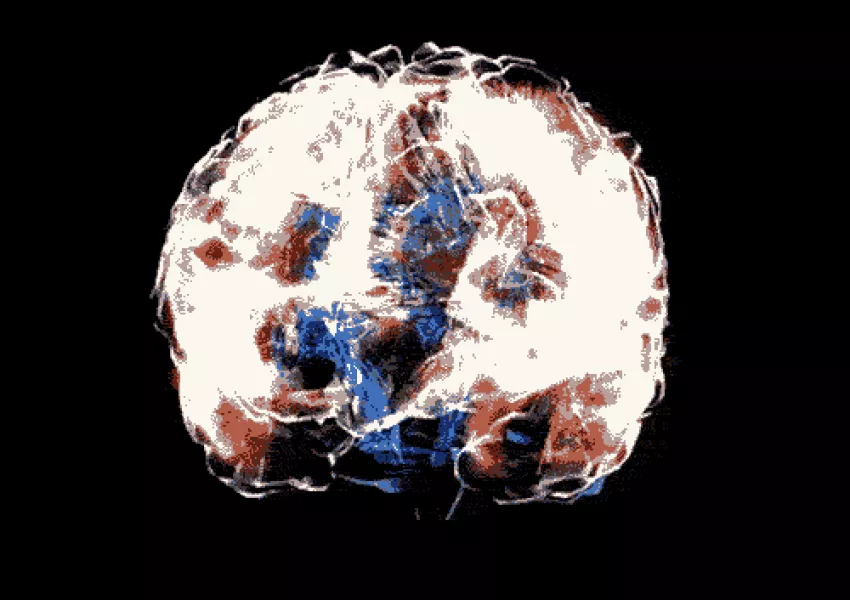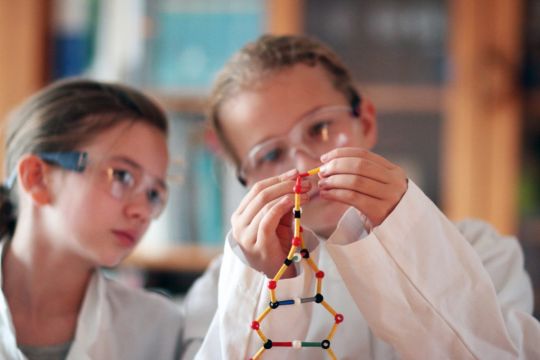The way parents bring children up will, of course, have a huge impact on their behaviour, but their genetic make-up can have just as much of an effect, and there’s nothing parents can do about that – is there?
Yes and no. While parents obviously can’t alter their children’s DNA, they can learn how to understand why their genes can make them act in certain ways, and tailor their parenting accordingly, explains Danielle Dick, a professor of psychology and human and molecular genetics. “Why do our kids do the amazing, crazy, ridiculous, frustrating, and adorable things they do?” she asks. “The answer can be found, partly, in their genes.
“We want to shape our children into responsible, kind, productive human beings, but very often we ignore one of the biggest things shaping our children’s development – their genes.”
Our children all differ in their strengths and their challenges. So why do we assume there's one "best" way to parent? Just like medicine is moving toward individualized care, we’re in need of a personalized approach to parenting that acknowledges our kids are all unique. pic.twitter.com/HnLMaezKP0
— Danielle Dick (@DrDanielleDick) October 20, 2021
Advertisement
Dick has just written The Child Code, in which she explains that around half the differences between children’s behaviour, ranging from extraversion (how outgoing they are) to impulsivity and anxiety, result from differences in their DNA, with the other half coming from differences in their environments. “By ignoring the genetic piece, we make it harder on ourselves as parents, because understanding how our children’s genes shape their behaviour can help us parent them to become the best version of themselves,” she stresses.
Here are five key things Dick believes parents need to know about how their children’s genes impact their behaviour…
1. Genes influence the way children’s brains are wired

DNA doesn’t just code for brown hair or blue eyes, it shapes the way children’s brains form, which impacts their natural tendencies, says Dick. This explains why some kids are naturally more sociable, and others take longer to warm to new people and situations, for example.
While some children are more go-with-the-flow, others can be more prone to distress, frustration, and fear. Some kids have more self-control, and others are more impulsive.“It all starts with differences in their DNA,” says Dick, who’s created a quiz in The Child Code to help parents work out their child’s genetic temperament.
“To figure out what behaviours reflect your child’s natural disposition, think about their tendencies that show consistency across time and situations,” she says. “For example, many children get grumpy when they’re tired or hungry, but if your child consistently seems to get very upset over seemingly minor things, and has been this way since they were little, it [may] reflect a disposition toward higher emotionality.”
2. Children’s genes influence how other people respond to them

Because children’s genes influence their temperaments, they also impact the way other people respond to them – a happy baby is more likely to be held and smiled at than a baby who cries constantly, and a child with low self-control may be more likely to elicit frustration or punishment from their parents.
”This creates a developmental cascade whereby each child’s genes impact their environmental experiences, which then further impact the child,” explains Dick.
3. Genes influence how children respond to their environments
They might share our DNA, but they are definitely their own people! #parenting #parenthood #children pic.twitter.com/zqyzV87Dr5
— Danielle Dick (@DrDanielleDick) October 15, 2021
Children with different dispositions experience the world in different ways, says Dick – a harsh look from a parent may bring one child to tears, for example, but barely register for another. Meeting a dog on the street might delight one child, and leave another cowering. “Certain environments can be more or less stressful, or enjoyable, depending on the child’s genetic disposition,” says Dick.
4. Genes influence the environments children seek
Dick explains that when children are little, they are largely at the mercy of adults as to their daily activities, but their reactions to different environments impact whether the activities are repeated or not. If you take your child to a museum and they love it, for example, you’re likely to take them to more museums. But if they misbehave at the museum, you’re less likely to seek out more museum bonding experiences.
“Through their reactions to certain environments, children indirectly shape the experiences the adults in their life seek out for them,” says Dick. “As they get older, children directly select environments that match their genetic temperaments.”

This can mean that risk-taking children climb to the top of tall trees and risk-taking adolescents hang out at concerts and bars, while children who are more anxious or introverted prefer to spend more time at home or participating in small group activities. “Children’s genes influence their development in part by influencing the environments they select,” explains Dick.
5. Children’s genetic dispositions can be tuned up or down by parents
By understanding the way children’s genes shape their behaviour, parents can work with their kids to accentuate their natural strengths, and avoid potential challenges that come with different dispositions, says Dick.
“This is perhaps key for parents: our children’s genes aren’t destiny,” she stresses. “They are born with natural dispositions, but we can play a role in how those dispositions unfold.”
She says that by understanding the good, and the not-so-good associated with different temperaments, and the gene-environment feedback loop, parents can help guide their children better.

For example, children whose genes lead them to be quicker to frustration, anger, or fear need different disciplinary strategies to teach them to manage their disposition, she explains. “But parents frequently mistake their child’s behaviour as being naughty, rather than originating in their child’s wiring, and respond by implementing consequences in ways that make the behaviour worse,” she says.
Mismatches between children’s dispositions and their environments are also frequently at the heart of family tension, she points out. For example, children differ in levels of extraversion from a very young age, and throwing an introvert into an unfamiliar setting with many new people can be overwhelming for them. But children’s developing brains don’t have the ability to explain why they’re so upset – they just respond with tears or tantrums.
“Understanding our children’s temperaments, and the needs of children with different dispositions, helps parents understand the why behind their behaviour,” explains Dick, “allowing them to put practices in place to ease the day-to-day stressors.”

The Child Code: The Science Behind Your Child’s True Nature and How to Nurture It, is published by Vermilion, priced €20. Available now.







